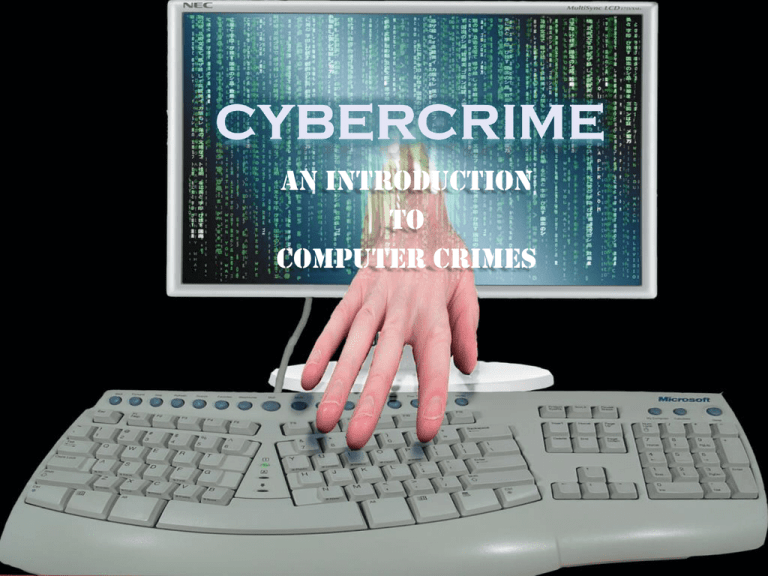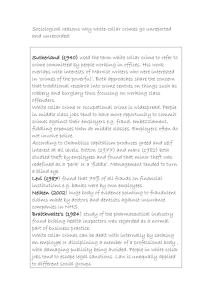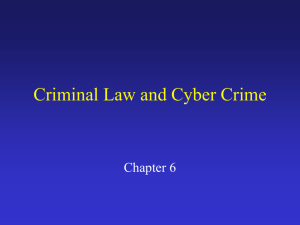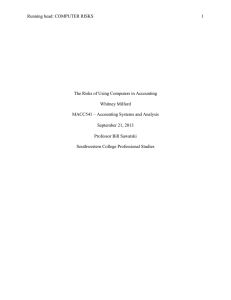CYBERCRIME
advertisement

An Introduction to Computer Crimes Computer crime refers to any crime that involves a computer and a network. The computer may have been used in the commission of a crime, or it may be the target. Netcrime refers to criminal exploitation of the Internet. Halder (2011) defines Cybercrimes as: "Offences that are committed against individuals or groups of individuals with a criminal motive to intentionally harm the reputation of the victim or cause physical or mental harm to the victim directly or indirectly, using modern telecommunication networks such as Internet (Chat rooms, emails, notice boards and groups) and mobile phones (SMS/MMS)".Such crimes may threaten a nation’s security and financial health. Issues surrounding this type of crime have become high-profile, particularly those surrounding cracking, copyright infringement, child pornography, and child grooming. There are also problems of privacy when confidential information is lost or intercepted, lawfully or otherwise. An Australian nationwide survey conducted in 2006 found that 2 in 3 convicted cyber criminals were between the ages of 15 and 26. Internationally, both governmental and non-state actors engage in cybercrimes, including espionage, financial theft, and other cross-border crimes. Activity crossing international borders and involving the interests of at least one nation state is sometimes referred to as cyber warfare. The international legal system is attempting to hold actors accountable for their actions through the International Criminal Court. In the United States cybercrime is estimated to cost $100 billion annually. Computer crime encompasses a broad range of activities. Generally, however, it may be divided into two categories: (1) crimes that target computers directly; (2) crimes facilitated by computer networks or devices, the primary target of which is independent of the computer network or device. Crimes that primarily target computer networks or devices include: 1. Computer viruses 2. Denial-of-service attacks 3. Malware (malicious code) Crimes that use computer networks or devices to advance other ends include: 1. Cyberstalking 2. Fraud and identity theft 3. Information warfare 4. Phishing scams Spam Spam, or the unsolicited sending of bulk email for commercial purposes, is unlawful in some jurisdictions. While anti-spam laws are relatively new, limits on unsolicited electronic communications have existed for some time. Fraud Computer fraud is any dishonest misrepresentation of fact intended to let another to do or refrain from doing something which causes loss. In this context, the fraud will result in obtaining a benefit by: Altering in an unauthorized way. This requires little technical expertise and is not an uncommon form of theft by employees altering the data before entry or entering false data, or by entering unauthorized instructions or using unauthorized processes; Altering, destroying, suppressing, or stealing output, usually to conceal unauthorized transactions: this is difficult to detect; Altering or deleting stored data; Altering or misusing existing system tools or software packages, or altering or writing code for fraudulent purposes. Other forms of fraud may be facilitated using computer systems, including bank fraud, identity theft, extortion, and theft of classified information. A variety of Internet scams target direct to consumers. Obscene or offensive content The content of websites and other electronic communications may be distasteful, obscene or offensive for a variety of reasons. In some instances these communications may be illegal. Over 25 jurisdictions place limits on certain speech and ban racist, blasphemous, politically subversive, libelous or slanderous, seditious, or inflammatory material that tends to incite hate crimes. The extent to which these communications are unlawful varies greatly between countries, and even within nations. It is a sensitive area in which the courts can become involved in arbitrating between groups with strong beliefs. One area of Internet pornography that has been the target of the strongest efforts at curtailment is child pornography. Harassment Whereas content may be offensive in a non-specific way, harassment directs obscenities and derogatory comments at specific individuals focusing for example on gender, race, religion, nationality, sexual orientation. This often occurs in chat rooms, through newsgroups, and by sending hate e-mail to interested parties (see cyber bullying, cyber stalking, hate crime, Online predator, and stalking). Any comment that may be found derogatory or offensive is considered harassment. There are instances where committing a crime, which involves the use of a computer, can lead to an enhanced sentence. For example, in the case of United States v. Neil Scott Kramer, Kramer was served an enhanced sentence according to the U.S. Sentencing Guidelines Manual §2G1.3(b)(3)[9] for his use of a cell phone to “persuade, induce, entice, coerce, or facilitate the travel of, the minor to engage in prohibited sexual conduct.” Connecticut was the first state to pass a statute making it a criminal offense to harass someone by computer. Michigan, Arizona, and Virginia have also passed laws banning harassment by electronic means. Harassment by computer statutes are typically distinct from cyberbullying laws, in that the former usually relates to a person's "use a computer or computer network to communicate obscene, vulgar, profane, lewd, lascivious, or indecent language, or make any suggestion or proposal of an obscene nature, or threaten any illegal or immoral act," while the latter need not involve anything of a sexual nature. Threats Although freedom of speech is protected by law in most democratic societies (in US this is done by First Amendment) that does not include all types of speech. In fact spoken or written "true threat" speech/text is criminalized because of "intent to harm or intimidate", that also applies for online or any type of network related threats in written text or speech. The US Supreme Court definition of "true threat" is "statements where the speaker means to communicate a serious expression of an intent to commit an act of unlawful violence to a particular individual or group".






